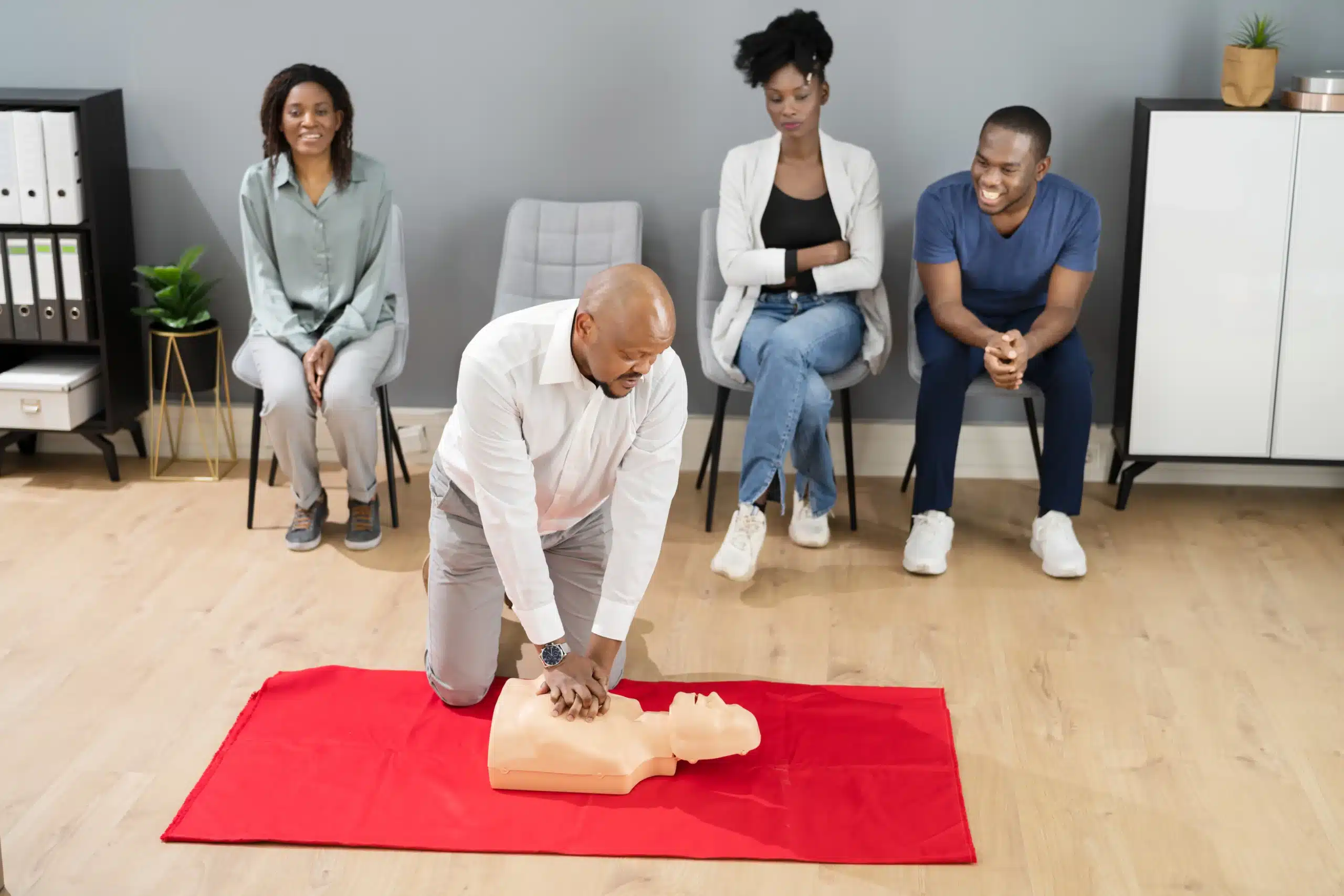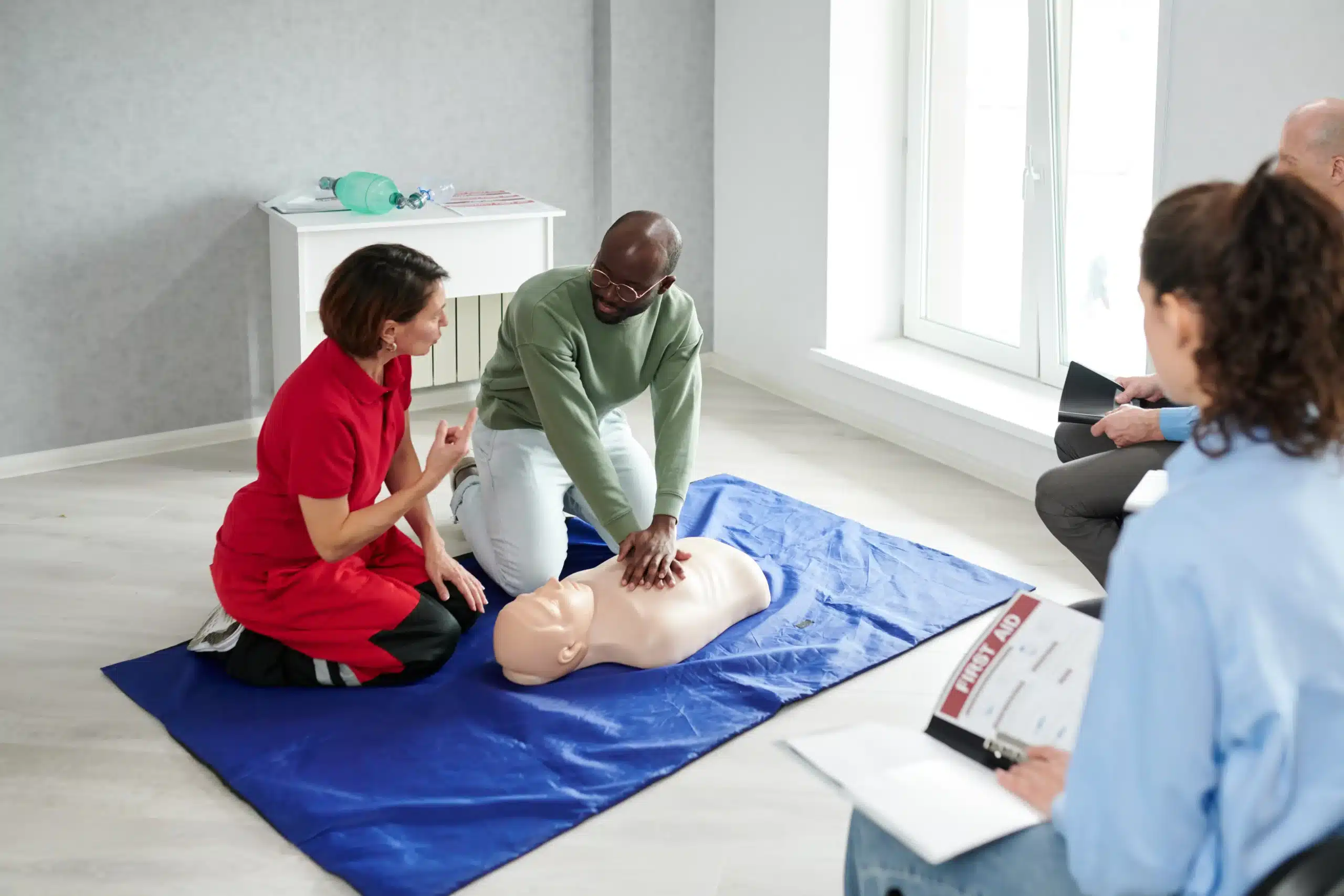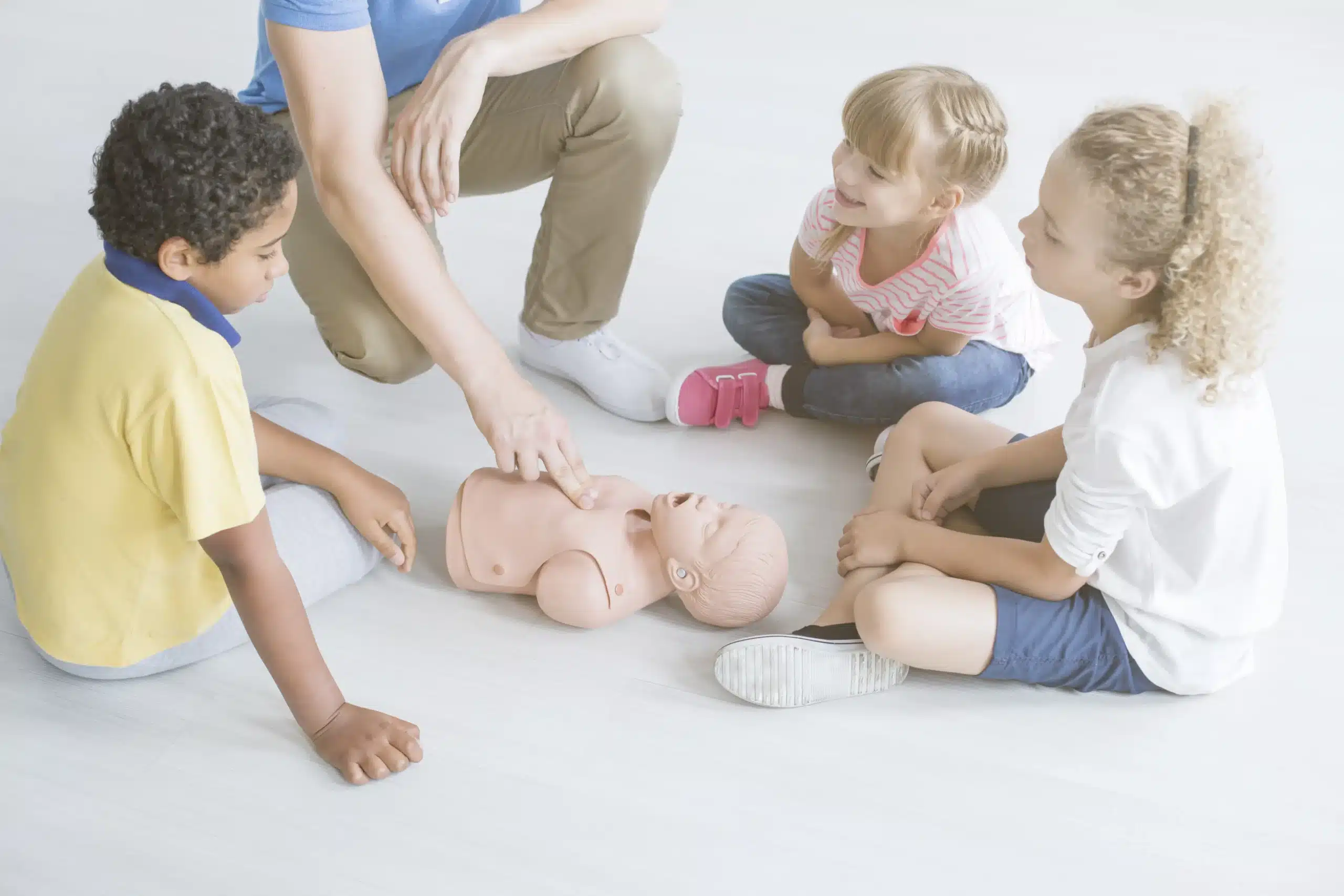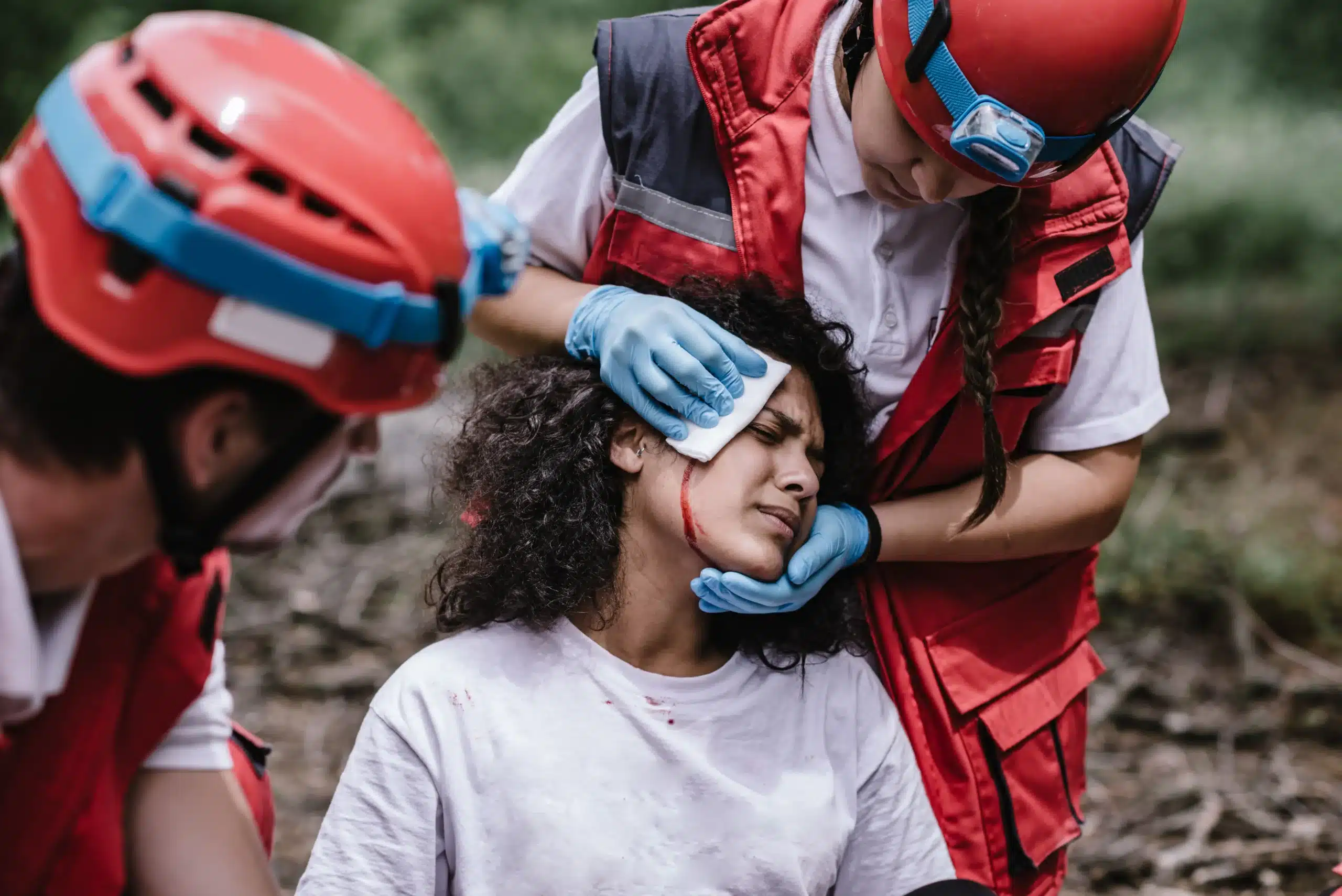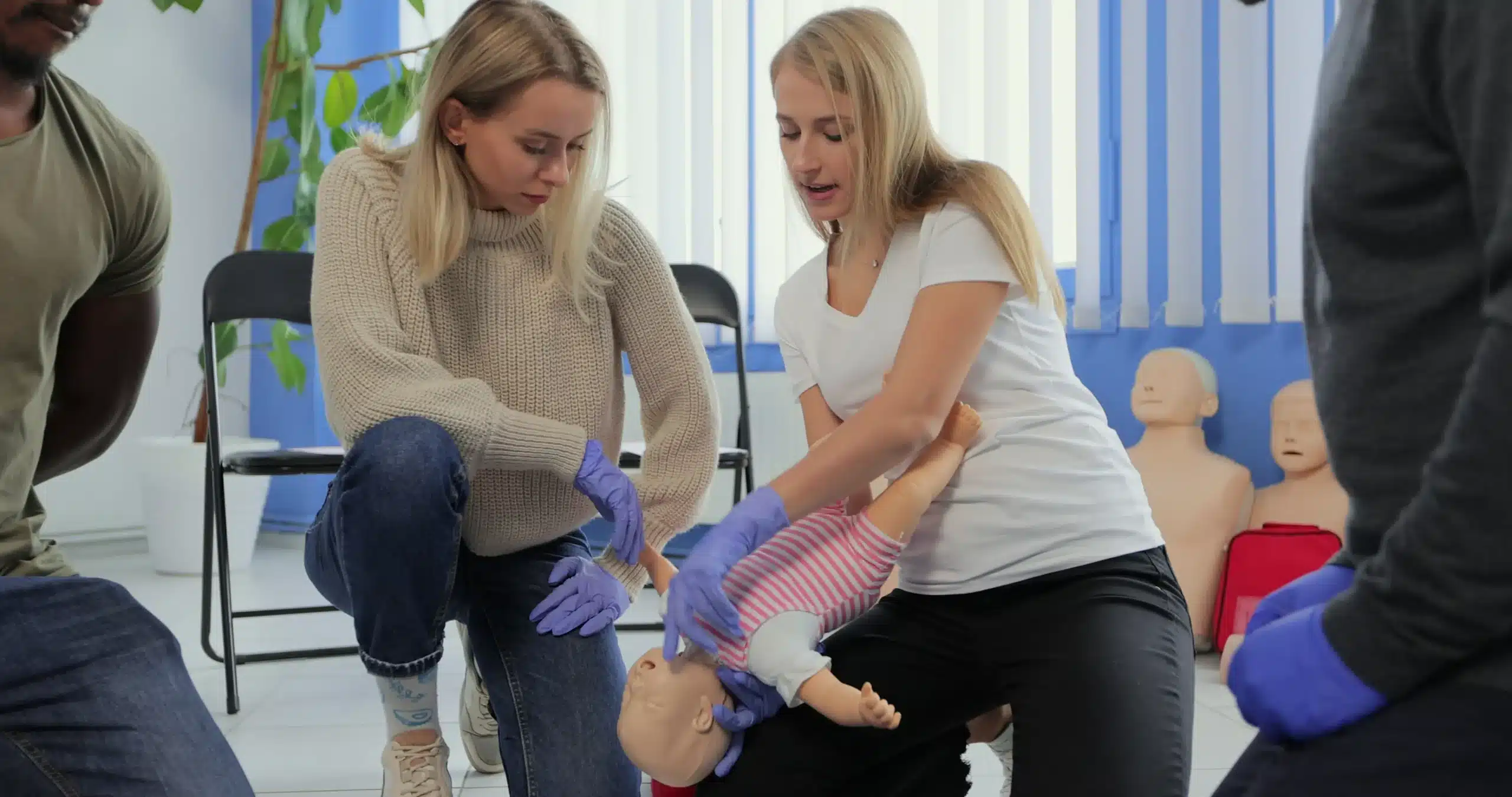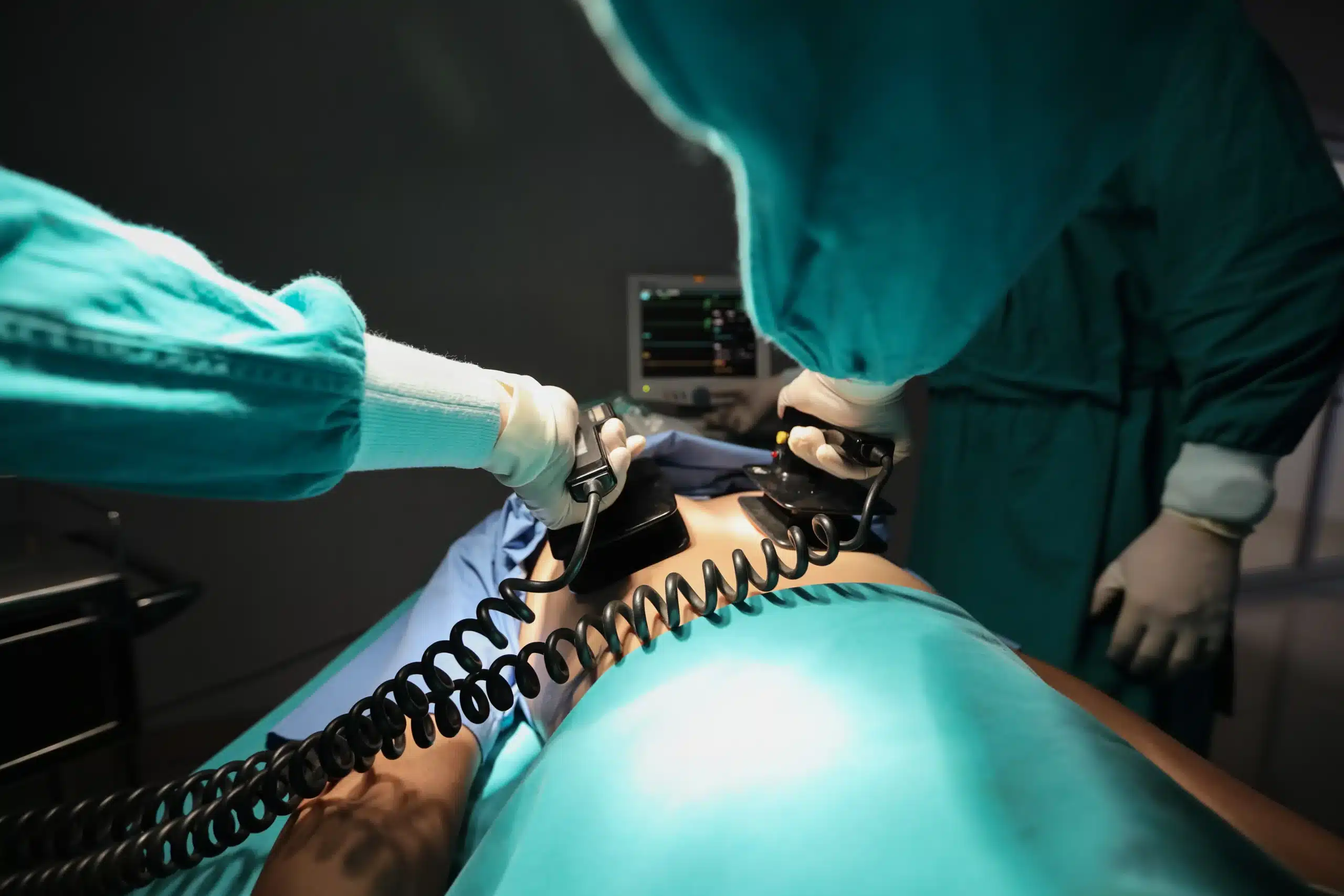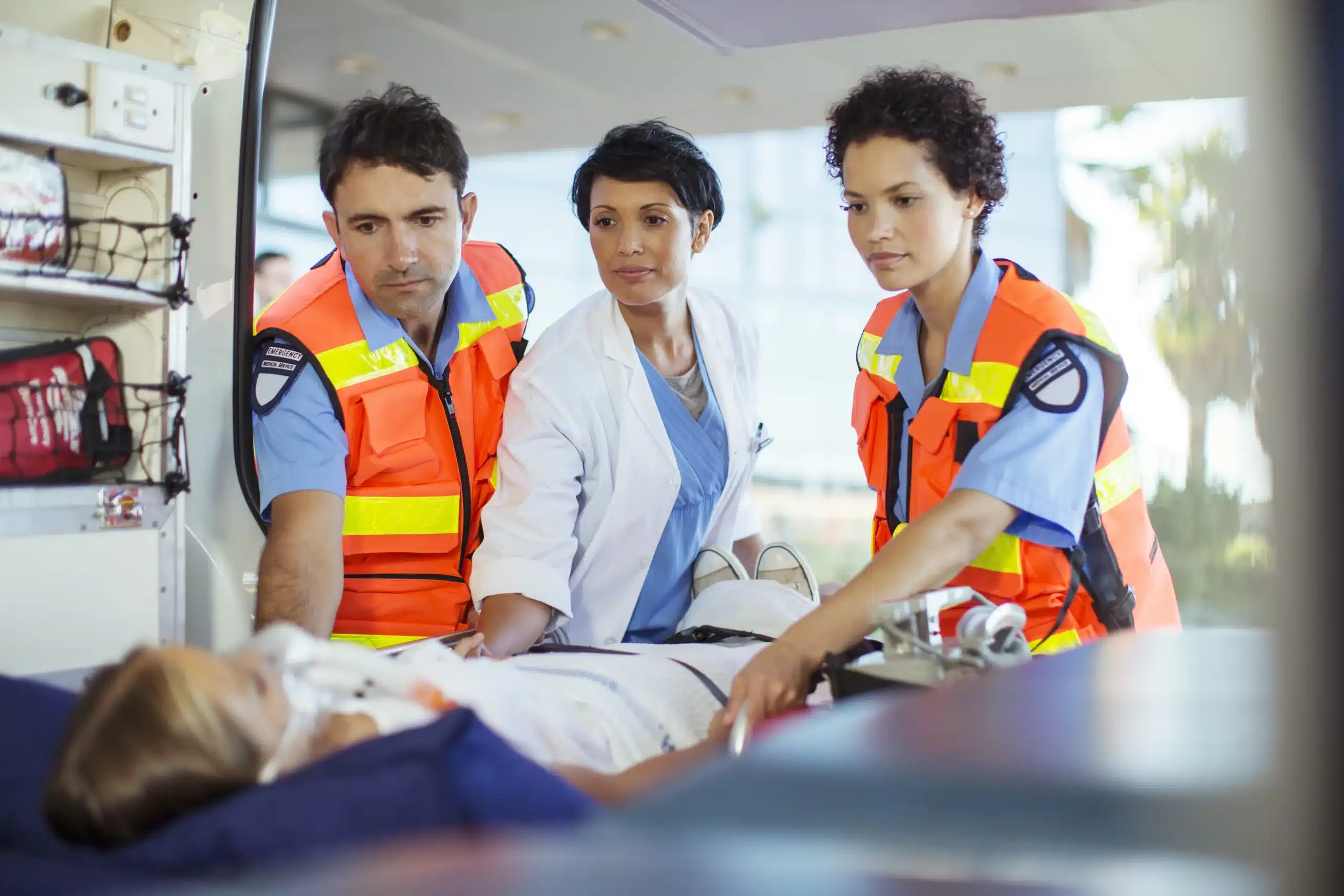Empowering yourself with life-saving skills is one of the most valuable things you can do. Basic Life Support (BLS) provides the knowledge and techniques to respond effectively in medical emergencies, giving you the confidence to act when it matters most. This guide is your comprehensive resource for understanding BLS, finding BLS classes near me, and choosing the right certification program. We’ll cover the essential skills, the importance of BLS for healthcare professionals, and how to maintain your skills long after you’ve completed your training. Whether you’re a healthcare provider, a caregiver, or simply someone who wants to be prepared, this guide will help you take the first step towards becoming a confident and capable first responder.
Key Takeaways
- BLS builds on CPR with advanced life-saving techniques: It’s crucial for healthcare professionals and involves skills like airway management, ventilation, and AED use, making it a significant step up from standard CPR.
- Choosing the right BLS course involves several key factors: Look for accredited providers with qualified instructors and convenient class formats. Comparing prices and exploring available discounts can help you find the best fit.
- Maintaining BLS skills requires ongoing effort: Regularly reviewing course materials, participating in refresher courses, and engaging in hands-on practice are essential for retaining these life-saving skills and ensuring you’re always prepared.
What is BLS?
Basic Life Support (BLS) is a level of medical care used for victims of life-threatening illnesses or injuries until they can receive full medical care at a hospital. It also includes maintaining a patient’s airway and breathing. It’s a critical skill set for healthcare providers and first responders—think doctors, nurses, paramedics, and EMTs. BLS builds on the foundation of CPR and adds advanced techniques for various emergencies. Think of it as CPR+, equipping professionals to handle more complex situations. Our BLS classes cover everything you need to know.
Definition and Key Skills
BLS covers a range of life-saving interventions. Beyond CPR chest compressions and rescue breaths, BLS training includes using automated external defibrillators (AEDs), clearing obstructed airways, and providing ventilation support with a bag-valve mask. These skills are essential for managing cardiac arrest, respiratory distress, and other critical conditions. BLS certification emphasizes teamwork and high-quality CPR, ensuring consistent and effective care during emergencies. Learn more about our CPR and First-Aid certification courses.
Importance for Healthcare Professionals
For healthcare professionals, BLS certification isn’t just a credential—it’s a must-have. It demonstrates a commitment to providing high-quality patient care and maintaining the skills needed to respond effectively in critical situations. Many healthcare employers require BLS certification as a condition of employment, and maintaining a current certification is crucial for career advancement. BLS certification is typically valid for two years, and renewal courses are readily available. Staying up-to-date ensures you’re always prepared to deliver the best possible care. Take advantage of our low price guarantee and get certified today.
BLS vs. Standard CPR
While both aim to save lives, BLS and standard CPR have different scopes and target audiences. CPR teaches the basics of chest compressions and rescue breaths for anyone to use in cardiac arrest situations. It’s a valuable skill for everyone to learn, from parents and teachers to bystanders. BLS, however, is designed specifically for healthcare providers and incorporates more advanced techniques. It goes deeper into airway management, ventilation, and the use of specialized equipment. If you’re pursuing a career in healthcare, BLS is the essential certification you need. We offer discount group classes for added value.
Find BLS Classes Near You
Finding the right BLS class can feel overwhelming, but it doesn’t have to be. This section breaks down where to find reputable providers and what to look for when making your decision.
Top BLS Certification Providers
Several organizations offer high-quality BLS certification courses. Here are a few of the most recognized:
Safety Training Seminars in Livermore
Safety Training Seminars in Livermore provides various BLS certification courses designed for both healthcare professionals and the general public. They focus on delivering comprehensive training in life-saving techniques and offer additional services like EMSA Child Care Health & Safety training and discount group classes. Their commitment to excellent customer service and competitive pricing makes them a strong local option for anyone seeking BLS certification in the Livermore, Dublin, and Mountain House areas. You can also check out their convenient RQI program for quick certification.
American Red Cross
The American Red Cross is a well-known provider of BLS certification courses. These courses are particularly valuable for healthcare providers and other professionals who need to respond to emergencies, such as nurses, doctors, police officers, and firefighters. Holding a Red Cross BLS certification demonstrates a commitment to patient care and emergency preparedness.
American Heart Association
The American Heart Association (AHA) offers a widely accepted BLS certification that involves both an online component and an in-person skills assessment. This blended learning approach ensures participants receive both theoretical knowledge and practical, hands-on training. It’s worth noting that the AHA requires an in-person skills check, so there’s no fully online option for their BLS certification.
Local Community Colleges
Many community colleges offer BLS certification courses, often at competitive prices. Check with your local colleges to see what programs they have available. For example, Hartford HealthCare offers a variety of AHA-certified courses, including BLS, at several training sites. Community colleges can be a convenient and affordable option for local residents.
Hospitals and Medical Centers
Hospitals and medical centers frequently offer BLS certification courses, both for their staff and the community. These courses are often taught by experienced medical professionals and provide access to high-quality training equipment. Contacting your local hospitals is a good way to find BLS classes near you.
Choosing a Provider: What to Consider
With so many options available, it’s essential to choose a BLS provider that meets your needs and learning style. Here are some key factors to consider:
Accreditation and Reputation
Look for courses that are accredited by a reputable organization like the AHA. This ensures the course content meets established standards and is recognized by employers. A provider’s reputation is also important. Do some research and read reviews to see what other students have to say about their experiences.
Instructor Qualifications
The quality of instruction can significantly impact your learning experience. Inquire about the instructors’ qualifications and experience. Experienced instructors can provide valuable insights and guidance, making the learning process more effective.
Class Formats and Schedules
BLS courses are offered in various formats, including traditional classroom settings, blended learning (online and in-person), and sometimes even fully online options (though not for AHA certification). Consider your schedule and learning preferences when selecting a class format. Flexible scheduling options can make it easier to fit the training into your busy life.
Reviews and Testimonials
Reading reviews and testimonials from previous students can give you valuable insights into a provider’s strengths and weaknesses. Look for feedback on the quality of instruction, course materials, and overall learning experience. This can help you make a more informed decision and choose a provider that aligns with your expectations.
What Happens in a BLS Class?
Taking a BLS class is a rewarding experience. You’ll gain essential skills and the confidence to act in medical emergencies. Here’s a preview of what to expect:
Course Content and Structure
BLS courses cover core life-saving techniques, starting with high-quality CPR for adults, children, and infants. You’ll also learn how to relieve choking and use an automated external defibrillator (AED). Beyond the practical skills, the course emphasizes the importance of teamwork, clear communication, and critical thinking in emergency situations. At Safety Training Seminars, our BLS certification courses often include a first aid component as well.
Hands-On Practice
BLS classes aren’t just lectures. You’ll spend time practicing your skills on manikins, giving you realistic experience in a safe environment. This hands-on training is crucial for building muscle memory and confidence. Some courses, like our RQI program, offer flexible learning and skills practice.
Assessment and Certification
To receive your BLS certification, you’ll need to demonstrate your knowledge and skills. This typically involves a written exam and a practical skills test. The American Heart Association (AHA) requires both an online written component and an in-person skills assessment. There isn’t a fully online option for AHA BLS certification. Upon successful completion, you’ll receive a certification card, usually valid for two years. Our certifications are valid for two years.
Class Duration and Formats
BLS classes are designed to fit your schedule. Most courses range from 2.5 to 4.5 hours, depending on the provider and format. You can choose from traditional classroom settings or blended learning options that combine online coursework with in-person skills sessions. We offer various discount group classes as well.
Common Questions
How long is BLS certification valid? BLS certification is typically valid for two years. Our low price guarantee ensures you’re getting the best value for your certification.
How can I renew my BLS certification? Renewal courses are available for those whose certification is expiring or has recently expired. Check with your certifying organization for specific renewal requirements. You can find renewal courses online and in person. Many providers offer streamlined renewal options. We offer convenient renewal courses to keep your certification current.
BLS Certification: Cost and Value
Getting your BLS certification is an investment in your skills and career. Let’s break down the costs, explore ways to find discounts, and look at why it’s such a valuable credential.
Average Price and Cost Factors
The cost of BLS certification varies based on several factors. Generally, you’ll pay somewhere between $40 and $100 for a course. The format (online or in-person) and the training provider (community college, independent center, etc.) influence the price. If your certification has lapsed, you might need to retake the full course instead of a refresher, which will affect the total cost. For the best value in the Livermore, Dublin, and Mountain House area, check out our low price guarantee.
Discounts and Promotions
Looking to save on your BLS certification? Many providers offer discounts, particularly for groups or recertifications. Some providers have reduced rates for students, healthcare professionals, or those registering for multiple courses. It’s always wise to contact providers directly and ask about current promotions or group discounts.
Comparing Provider Prices
Before committing to a BLS course, compare prices from different providers. Costs can differ based on location and what the course includes. Some providers charge more for in-person training than online, while others may include study materials or certification cards in their fees. Our CPR and First Aid certification courses are competitively priced and offer comprehensive training.
Renewal Requirements and Costs
BLS certification requires periodic renewal, typically through a recertification course. This is usually cheaper than the initial certification. The renewal cost depends on how long it’s been since your last certification. If too much time has passed, you might need to take the full course again. Keep track of your renewal dates to avoid paying more than necessary. Our RQI program offers a streamlined way to maintain your certification.
Prepare for Your BLS Class & Maintain Skills
Getting ready for your BLS class and keeping your skills current doesn’t have to be complicated. With a little preparation and the right approach, you can confidently learn and retain these lifesaving techniques. At Safety Training Seminars in Livermore, we’re here to support you every step of the way.
Prerequisites and Materials
Before your BLS class, check with your chosen provider (for example, Safety Training Seminars) for any specific prerequisites. Generally, there aren’t strict requirements, but some providers may suggest reviewing basic first aid principles beforehand. All required course materials, including the American Heart Association BLS Handbook, are typically provided as part of your class registration. This way, you can focus on learning the material rather than gathering supplies. Remember, your BLS certification is valid for two years, so mark your calendar for renewal. Many providers, including Safety Training Seminars, offer renewal courses, especially helpful for those within 30 days of their expiration date.
Learning Tips
BLS courses emphasize hands-on learning and practical skills application. If you’re a hands-on learner, you’ll thrive in this environment. If this is your first BLS class, an in-person course offers the best learning experience. You’ll have more opportunities to ask questions, practice skills with instructors, and receive immediate feedback. Don’t hesitate to ask your instructor for clarification or extra guidance—we’re here to help you succeed. Take advantage of any practice scenarios or simulations offered during the course. The more you practice, the more confident you’ll become.
Career Benefits
A BLS certification demonstrates your commitment to professional development and patient safety, a valuable asset in many careers. It’s essential for healthcare providers, including nurses, doctors, and other professionals like police officers, firefighters, and lifeguards. Even if not strictly required for your job, having a BLS certification can make you a more competitive candidate and open doors to new opportunities. It shows potential employers you’re prepared to handle emergencies and prioritize safety.
Keeping Your Skills Sharp
BLS training often uses real-life emergency scenarios to prepare you for various situations. This practical approach helps you develop critical thinking skills and react effectively under pressure. Many providers, like Safety Training Seminars, offer resources and ongoing support to help you maintain your skills after certification. Take advantage of refresher materials, such as quizzes, games, and videos, to stay sharp. Regularly reviewing these resources can help you retain the information and maintain your confidence in performing BLS. Consider participating in refresher courses or practice sessions to keep your skills current and ensure you’re always ready to respond to an emergency.
Related Articles
- BLS Classes in Dublin: Your Complete Guide – Livermore CPR Classes
- BLS Certification in Mountain House for Healthcare Providers – Livermore CPR Classes
- Essential Guide to BLS Courses in Mountain House – Livermore CPR Classes
- BLS for Healthcare Providers in Livermore: A Practical Guide – Livermore CPR Classes
- BLS Renewal in Dublin: A Simple Guide – Livermore CPR Classes
Frequently Asked Questions
What is the difference between BLS and CPR?
CPR focuses on chest compressions and rescue breaths for anyone to use during cardiac arrest. BLS builds upon CPR, adding advanced airway management, ventilation techniques, and AED use, specifically designed for healthcare providers and first responders. BLS provides a broader skillset for professionals to handle more complex medical emergencies.
How do I choose a BLS certification provider?
Look for a provider accredited by a reputable organization like the American Heart Association. Consider instructor qualifications, class formats (in-person, blended, or online), and schedules. Reading reviews from previous students can offer valuable insights into the quality of instruction and overall learning experience. Don’t hesitate to contact providers directly to discuss your specific needs and ask about any available discounts.
What can I expect during a BLS class?
Expect a combination of interactive lectures, demonstrations, and hands-on practice. You’ll learn core life-saving techniques like CPR, choking relief, and AED use. The course emphasizes teamwork and clear communication in emergency situations. You’ll practice your skills on manikins and receive feedback from instructors. Assessment typically involves a written exam and a practical skills test.
How much does BLS certification cost, and are discounts available?
BLS certification costs vary, typically ranging from $40 to $100, depending on the provider, format, and location. Many providers offer discounts for groups, students, healthcare professionals, or recertifications. Always inquire about potential discounts before registering.
How can I maintain my BLS skills after certification?
Your BLS certification is typically valid for two years. To keep your skills sharp, regularly review course materials, utilize online resources like quizzes and videos, and consider participating in refresher courses or practice sessions. Staying up-to-date with the latest guidelines and techniques ensures you’re always prepared to respond effectively in an emergency.
